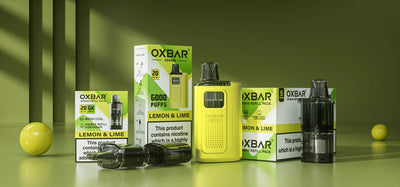Responsible Disposal and Recycling of E-Cigarette Batteries
As the use of electronic cigarettes (e-cigarettes) continues to rise globally, it’s becoming increasingly important to address the responsible disposal and recycling of e-cigarette batteries. Proper handling of these batteries not only ensures environmental safety but also protects public health. In this comprehensive guide, we will explore the types, composition, and best practices for disposing of e-cigarette batteries to ensure sustainability and safety.
Understanding E-Cigarette Batteries
What is an E-Cigarette Battery?
An e-cigarette battery powers the device that heats the e-liquid, converting it into vapour for inhalation. These batteries are integral to the performance and efficiency of e-cigarettes, making their safe disposal essential.
Types of E-Cigarette Batteries
E-cigarette batteries come in two primary types:
-
Integrated Batteries: Found in smaller, more compact devices, these batteries are built into the e-cigarette and are not designed to be removed.
-
Replaceable Batteries: Common in larger devices, these batteries, typically lithium-ion, can be removed and replaced. Popular models include 18650, 20700, and 21700 batteries.
Composition of E-Cigarette Batteries
Most e-cigarette batteries are lithium-ion, known for their high energy density and rechargeability. Here’s what they typically consist of:
- Cathode and Anode Materials: The cathode often consists of lithium metal oxide, while the anode is made from carbon (graphite).
- Electrolyte Solution: A liquid or gel-like substance, often a mix of organic solvents and lithium salts, that facilitates ion flow within the battery.
- Separator: A thin membrane that separates the cathode and anode, preventing short circuits while allowing ion passage.
- Metal Casing: Typically made of steel or aluminum, providing the structural stability and protection needed for safe operation.
Hazardous Components
Despite their benefits, lithium-ion batteries contain hazardous components that necessitate careful handling. These include:
- Flammability: The electrolyte solution in these batteries is highly flammable, posing a risk of fire if the battery is damaged or improperly disposed of.
- Toxicity: Certain chemicals in the batteries are toxic and can contaminate soil and water if they leak.
- Pressure Build-Up: Overheating or internal faults can cause pressure build-up, leading to battery rupture or explosion.
Why Proper Disposal Matters
Improper disposal of e-cigarette batteries can lead to significant environmental and safety risks. The hazardous materials within these batteries can ignite fires, expose individuals to harmful chemicals, and contaminate the environment. Therefore, responsible disposal and recycling are not just important—they are essential.
Recycling E-Cigarette Batteries
Recycling e-cigarette batteries offers numerous benefits, from environmental protection to the recovery of valuable materials. Here’s why it’s so crucial:
- Recovering Valuable Materials: Recycling processes can extract valuable metals such as lithium, cobalt, nickel, copper, and aluminum, which can be reused in various industries.
- Environmental Protection: Proper recycling prevents the hazardous components of batteries from entering landfills, reducing the risk of soil and water contamination.
Steps for Safe Disposal
Given the hazards associated with e-cigarette batteries, they should not be disposed of like regular household batteries. Here’s how you can safely dispose of them:
-
Find a Local Recycling Point: Use services like Recycle Now to locate a facility that accepts lithium-ion batteries.
-
Follow Specific Instructions: Before recycling, tape the battery terminals to prevent short circuits.
-
Avoid Regular Trash: Never dispose of e-cigarette batteries in regular trash or household recycling bins.
Responsible Disposal Guidelines
To ensure safe and responsible disposal of e-cigarette batteries, consider these guidelines:
- Use Designated Recycling Points: Only use facilities equipped to handle the specific needs of lithium-ion batteries.
- Handle with Care: Always prevent exposure to high temperatures and physical damage, which can cause hazardous reactions.
- Stay Informed: Familiarize yourself with local regulations and guidelines for battery disposal.
Conclusion: Ensuring a Sustainable Future
The proper disposal and recycling of e-cigarette batteries are vital for protecting both the environment and public health. By understanding the types and compositions of these batteries and adhering to safe disposal practices, we can contribute to a more sustainable and safer environment. It’s the responsibility of each user to ensure that these batteries are recycled or disposed of correctly.
For more information on vaping devices and accessories, visit our main page. Explore our range of e-liquids and disposable vape bars to find products that suit your needs.
By following these guidelines, you can help ensure that your e-cigarette batteries are disposed of responsibly, contributing to a healthier planet and a safer community.


